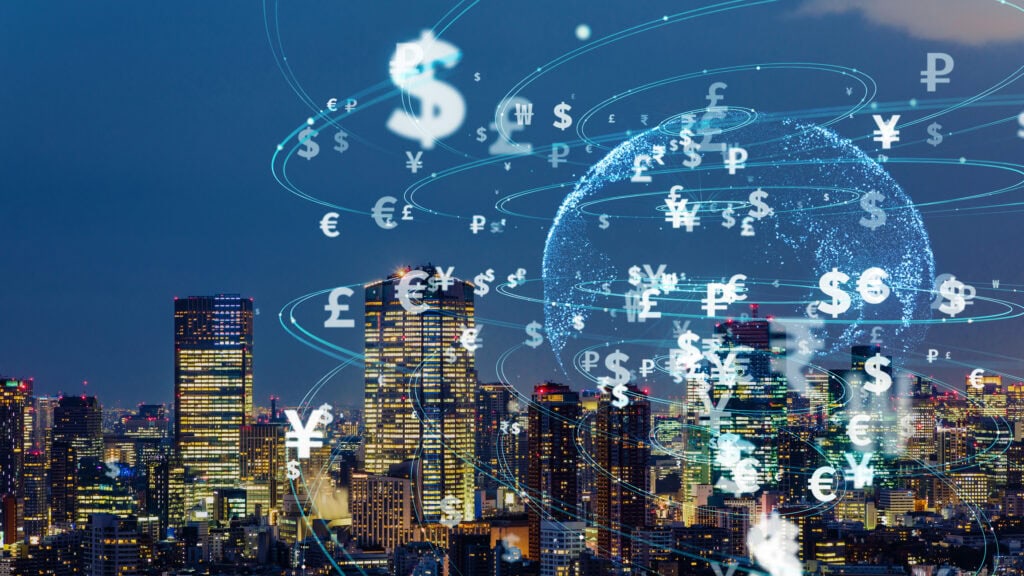2024年を特徴づけるトレンドを振り返ると、製造業は転換点を迎えていることが分かります。デジタル化、破壊的技術、オペレーショナル・エクセレンス、ESGパフォーマンスなど、あらゆる分野での進歩に重点が置かれる中、CEOはレガシーシステム、インフラ、そして時代遅れのオペレーションへの対応といった重要な課題を克服しなければなりません。
Advancements in these areas are crucial, especially as we anticipate that 2025 is the year of step-change transformation, where incremental change is no longer sufficient and instead, a significant uplift in performance is required, paving the way to not only achieve インダストリー4.0 but also become インダストリー5.0-ready.
ザイオン・マーケット・リサーチによると、世界のインダストリー5.0市場は、今後10年間で1兆4千億米ドルから2032年末には1兆4千億米ドルへと飛躍的に成長する見込みです。機械が世界を支配するのではないかという懸念があるにもかかわらず、この新しい時代は、人間と機械の相互作用、社会的責任、労働者の再教育、サイバーセキュリティ、そしてデータのプライバシーの維持を特徴とし、この変革を導く上で人間が果たす重要な役割を浮き彫りにするでしょう。
While the future remains unwritten, 2025 will be unlike any other. As McKinsey and Co. says, the industry doesn’t need a total makeover, but CEOs have their work cut out. They must not only concentrate on rebranding for GenZ and millennials and redesigning their manufacturing businesses and operations, but drastically transform in areas like sustainability, innovation and transformation. If they don’t, CEOs could risk the competitiveness and viability of their businesses. As this year draws to a close, we recognise that change, often painful in the short term, is necessary in our industry.
インダストリー5.0から自動化まで – 2025年を形作るトレンド
As we approach the new year, talk of inflation and political tensions is already dominating the news. How will the outside world affect manufacturing? We don’t have a crystal ball, but by scrutinising the market and analysing last year’s trends—such as implementing cybersecurity-enabled software and increased focus on compliance—we can establish the framework for manufacturing priorities, informing our expectations for 2025.
インダストリー5.0の台頭は、AIをはじめとする革新的なソリューションの台頭を促し、業務改革において重要な役割を果たすと予想されます。AIは、製造現場から会議まで、ビジネスのあらゆる側面に影響を与えることが期待されており、かつては人間が行っていた危険な作業を自動化し、生成型AI(GenAI)を活用して会議の内容を要約するなど、その可能性は無限大です。
自動化が中心となる中で、人間は後回しにされるのでしょうか?一部の企業が人員削減を行い、AIや機械への依存度を高める中で、製造業は崩壊に向かうのか、変革に向かうのか、それともその両方なのか?答えは複雑です。CEOは競争力を維持するために、インダストリー4.0のソリューションとスマートマニュファクチャリングを導入する必要がありますが、ご存知の通り、インダストリー5.0は人間が主導することになります。
ここでは、過去と未来を考察し、来年を特徴づけると予想されるトレンドに焦点を当てます。
2025年のトップ予測を解説
昨年はCEOにとって、政治的な不確実性、インフレ、そして複雑な規制環境を乗り越える必要があった厳しい年でした。 EUの企業サステナビリティ・デューデリジェンス指令(CSDDD) サプライチェーンを標的にし、世界貿易に影響を与えるバイ・アメリカ法、そして EU森林伐採規制(EUDR) 森林劣化に関連する製品の規制は、さらなる圧力となりました。2025年に施行されるこれらの規制の多くは、困難な状況下で企業を経営する上で、CEOが新たな規則を常に把握しておくことを要求しています。
他に何がこの業界の事業運営、生産、そして持続可能性への取り組みに影響を与えるでしょうか?2025年に向けた5つの予測をご紹介します。

1. AI is a non-negotiable and agentic AI
新たなフロンティア。AIかそうでないか、AIかそうでないか。この複雑な状況ではAIを活用したツールが求められているが、多くの経営幹部は導入の準備ができておらず、ROIが得られるかどうかも把握していない。ガートナーは、 30パーセント GenAIプロジェクトの数は2025年末までに廃止される見込みです。また、エージェント型AIは、行動を計画し、意思決定を行い、過去の経験から学習できるため、次の大きなトレンドになりつつあります。さらに、ワークフローの効率化と予知保全を改善することで、製造プロセスを最適化することも可能になります。
おすすめ – 従業員の維持とスキルアップを図ることで、AIと人間の力のバランスを保ちます。AIを従来の手法と組み合わせると同時に、AI固有の危険性を防ぐためのシャットダウンシステムなどの制御対策を確実に講じます。また、導入する新しいAIソリューションについても知識を深めましょう。表面的な知識だけでは、この困難な状況では役に立ちません。
2. 持続可能性はグリーンソフトウェアによってサポートされます
ガートナーは、CEOが最も費用対効果の高い持続可能なITイニシアチブを導入していないと警告しており、これらの低コストの選択肢の導入率は組織全体で30%未満にとどまっていることを示しています。この数値は急速に上昇すると予測されています。その他のグリーンソフトウェアに関する提案には、「ゾンビ」機器の撤去、クラウドへの移行、強化冷却などの十分に活用されていない対策の活用などが含まれています。さらにガートナーは、世界の大企業の30%がソフトウェアのサステナビリティを導入すると予測しており、これは2024年には10%未満です。
おすすめ – グリーンソフトウェアへの支出増加は、CEOがグリーン化の取り組みを積極的に推進すべきことを示しています。グリーン企業は従業員の満足度、ブランド認知度、投資額の向上につながり、最終的にはより高い利益が期待できるからです。パタゴニアはその好例です。
3. メタバースが主流になりつつある
製造業において、メタバースは2033年までに129億3000万米ドルから3370億米ドルに成長すると予測されています。2024年のトップバズワードの一つであるメタバースは、製造オペレーションを変革し、イノベーションを推進する可能性があり、デジタルツインを活用した仮想世界との連携により、プロセス最適化を大幅に向上させます。メタバースは、仮想プロトタイピング、コラボレーションの強化、そして充実したトレーニングとシミュレーション機能を可能にします。
おすすめ – Get comfortable with being uncomfortable. Ask your engineers and CIOs pointed questions about how to successfully apply the metaverse to ensure it matches up with your current IT infrastructure, or locate a trusted managed services provider to help.
4. 「循環型経済が唯一の経済になる」
ガートナーは、これが2029年までに実現すると述べています。循環型経済は未来であり、製造業は今すぐ廃棄物を削減するためにこれを導入する必要があります。Zion Market Researchによると、製造業は世界で発生する廃棄物の約50%を占めています。また、循環型経済には様々なメリットもあります。ガートナーによると、サプライチェーンリーダーの74%は、循環型経済を導入することで2025年までの利益増加が見込めるとのことです。
おすすめ – Are you lagging in adopting a circular economy approach? If so, you are falling behind, but the good news is that you can start now. To start, look at optimising resource efficiency, cutting waste (i.e. recycling and reusing materials), or managing product lifecycles efficiently.
5. マイクロファクトリーは製造業の未来
これらの小規模工場は最先端のツールとソリューションを活用し、従来の大規模工場では実現が難しい柔軟性と拡張性を実現します。また、AI、機械学習、ビッグデータなどの革新的な技術も活用することで、無駄の削減、プロセスの最適化、パーソナライゼーションの向上を実現します。
おすすめ – CEOs should first assess their current processes and then include microfactories in their long-term strategy, as they play a pivotal role in supporting Industry 4.0. They can seamlessly incorporate advanced technologies like IoT, AI, and machine learning, and they are agile, offering higher levels of customisation and aligning with eco-friendly manufacturing.
結論
CEOs must start strategising for 2025 if they haven’t already. The lack of a strategic master plan that integrates デジタル変革, sustainability, and AI will hold businesses back in the year ahead. As part of a strategic master plan, AI should feature strongly. But a word of caution: CEOs should temper their enthusiasm for automation, AI and GenAI, recognising that although these cutting-edge solutions may be transformative, they are still new and will need a steady hand to guide them.
最後に、ビジネスリーダーは、持続可能な対策を効果的に支援できる革新的な技術を導入するための予算を確保する必要があります。グリーンリーダーシップを恐れる必要はありません。それは大きな利益をもたらし、サステナビリティパフォーマンスの向上につながり、企業全体のサステナビリティ目標の達成に大きく貢献します。詳細については、 消費者サステナビリティ業界準備指数, お問い合わせ.
Frequently Asked Questions About Top 5 Manufacturing Trends For 2025
What Are the AI Manufacturing Trends in 2025?
AI manufacturing trends in 2025 include predictive maintenance, intelligent automation, quality control using computer vision, and AI-driven supply chain optimisation. Manufacturers are using AI to improve efficiency, accuracy, and decision-making.
What is the Future Industry in 2025?
The future industry in 2025 is shaped by smart manufacturing, AI technologies, sustainable production, and advanced robotics. Factories are becoming more automated, data-driven, and aligned with Industry 4.0 principles.
What Are the Top Manufacturing Trends in 2025?
The top manufacturing trends in 2025 include AI integration, digital twins, circular economy practices, microfactories, and sustainability. These trends are driving innovation and reshaping global production systems.
How is AI Transforming Manufacturing in 2025?
AI is transforming manufacturing in 2025 by enabling real-time data analysis, automating repetitive tasks, predicting equipment failures, and enhancing supply chain visibility. AI helps manufacturers boost productivity and reduce downtime.
What Role Does Sustainability Play in the Future of Manufacturing?
Sustainability plays a major role in the future of manufacturing by reducing waste, lowering emissions, and promoting energy-efficient practices. In 2025, manufacturers are adopting circular economy models and eco-friendly materials.
Which Technologies Will Shape the Manufacturing Sector in 2025?
Technologies shaping the manufacturing sector in 2025 include artificial intelligence, robotics, IoT, 3D printing, and digital twins. These innovations are driving smart factories and real-time decision-making.
Why is Smart Manufacturing Important in 2025?
Smart manufacturing is important in 2025 because it uses automation, AI, and connected systems to improve efficiency, reduce costs, and respond quickly to market changes. It supports innovation and competitiveness in the industry.
What Are the Key Challenges for Manufacturers in 2025?
Key challenges for manufacturers in 2025 include supply chain disruptions, cybersecurity risks, rising costs, labour shortages, and adapting to new technologies. Companies must stay agile and resilient to remain competitive.
What Industries Are Expected to Grow the Most in 2025?
Industries expected to grow the most in 2025 include clean energy, electric vehicles, advanced manufacturing, biotechnology, and semiconductors. These sectors are fueled by innovation, digitalisation, and global sustainability goals.



